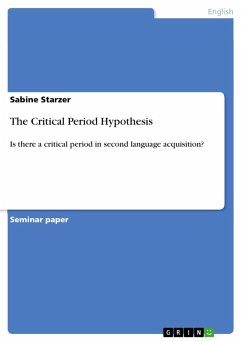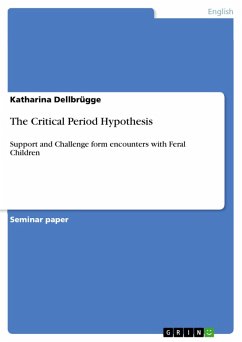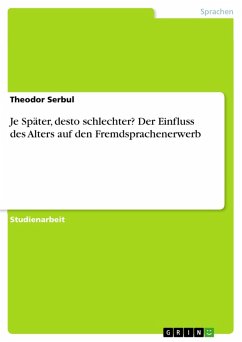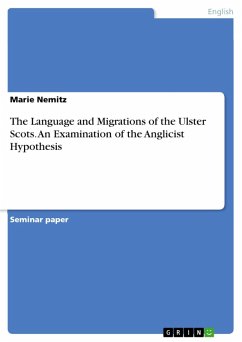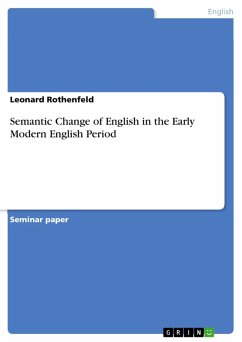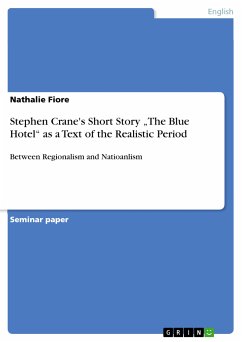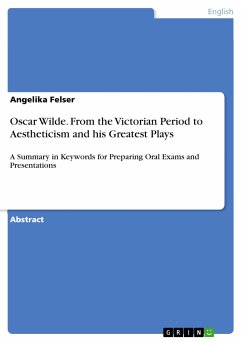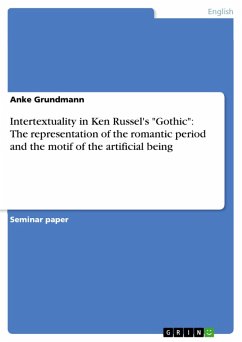Seminar paper from the year 2013 in the subject English Language and Literature Studies - Linguistics, grade: 2, University of Vienna (Anglistik), course: Proseminar Linguistik, language: English, abstract: When it comes to learning a language, there seems to be a certain period in which a child must acquire the basic competences in order to be able to understand and use language. This ¿window of opportunity¿ is also called ¿critical period¿ and has been the subject of much research over the last decades. Especially for future language teachers, the question about the existence of such a critical period for second language acquisition as well arises. This paper examines the actual research on critical period for second language acquisition and sheds light on the on-going academic discussion. The paper proceeds as follows: section 2 provides a short description of the Critical Period Hypothesis and sheds light on biological and neurological aspects of language learning. In section 3 recent findings of research according to critical periods in second language acquisition are presented and discussed. Section 4 contains a list with personal characteristics and strategies having emerged out of different studies. These characteristics might help second language learners to gain more success in their goal to reach the status of native speakers. This of course can also be useful for language teachers who want to support their learners. Section 5 provides a short conclusion.
Dieser Download kann aus rechtlichen Gründen nur mit Rechnungsadresse in A, B, BG, CY, CZ, D, DK, EW, E, FIN, F, GR, HR, H, IRL, I, LT, L, LR, M, NL, PL, P, R, S, SLO, SK ausgeliefert werden.

